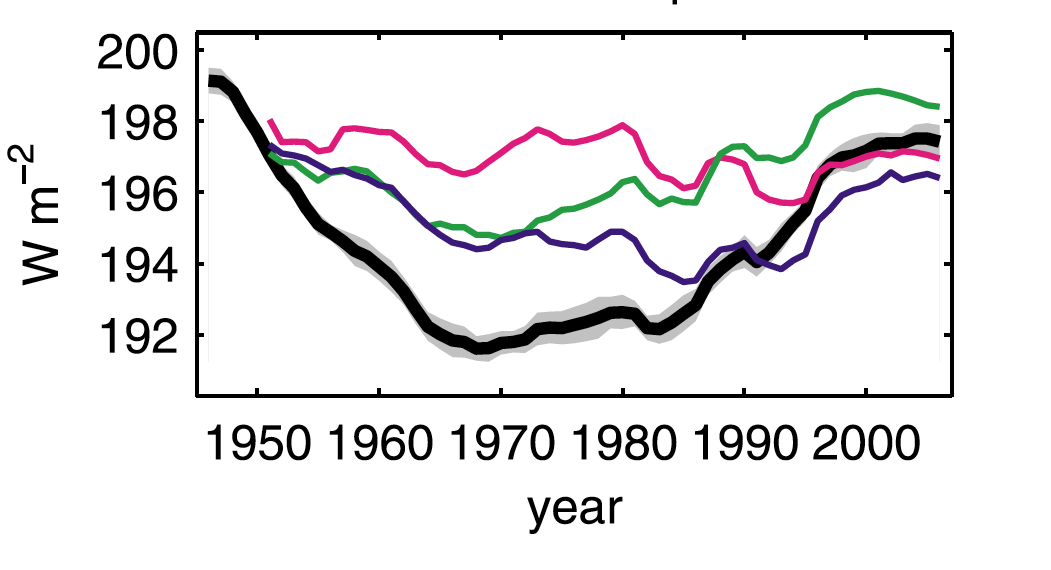Global Climate Modelling
For a better understanding of the decadal variations of the Earth radiation budget we perform a large number of transient simulations with the global climate modelling framework ECHAM-HAM (Folini and Wild 2011, 2015, Dallafior et al. 2015, 2016, Lembo et al. 2017, Folini et al. 2017). ECHAM-HAM is particularly well suited for the investigation of variations in the radiation budgets, as it takes into account a detailed representation of the key influential factors of natural and anthropogenic origin, namely clouds and aerosols. To this end, ECHAM-HAM includes sophisticated schemes of cloud microphysics and interactive aerosols (HAM, Hamburg Aerosol Model). This allows a detailed simulation of aerosol-cloud-radiation interactions, of critical importance for an appropriate simulation of changes in the radiation budgets, such as dimming and brightening. Ensembles of multidecadal simulations are carried out with ocean representations of different complexities (prescribed SST, mixed layer ocean, dynamical ocean), as well as different forcing factors in sensitivity studies. In a future step, also the modelling framework ICON is envisaged to be used for these investigations.

Folini, D., and Wild, M., 2011: Aerosol Emissions and Dimming / Brightening in Europe: sensitivity studies with ECHAM5-HAM, J. Geophys. Res., 116, D21104, doi:10.1029/2011JD016227.
Folini, D., and Wild, M., 2015: The effect of aerosols and sea surface temperature on China's climate in the late twentieth century from ensembles of global climate simulations, J. Geophys. Res. Atmos., 120, 2261-2279, DOI: 10.1002/2014JD022851.
Dallafior, T. N., Folini, D., Knutti, R., and Wild, M., 2015: Dimming over the oceans: Transient anthropogenic aerosol plumes in the twentieth century, J. Geophys. Res. Atmos., 120, 3465–3484, doi:10.1002/2014JD022658.
Dallafior, T. N., Folini, D., Knutti, R., and Wild, M., 2016: Mixed-layer ocean responses to anthropogenic aerosol dimming from 1870 to 2000, J. Geophys. Res. Atmos., 121, 49–66, doi:10.1002/2015JD024070.
Lembo, V., Folini, D., Wild, M., and Linoello, P., 2017: Energy budgets and transports: global evolution and spatial patterns during the twentieth century as estimated in two AMIP like experiments. Clim. Dyn., 48, 1793–1812, DOI: 10.1007/s00382-016-3173-9
Folini, D., Dallafior, T. N., Hakuba, M. Z., and Wild, M., 2017: Trends of surface solar radiation in unforced CMIP5 simulations. J. Geophys. Res., 122, 469–484, doi:10.1002/2016JD025869.
